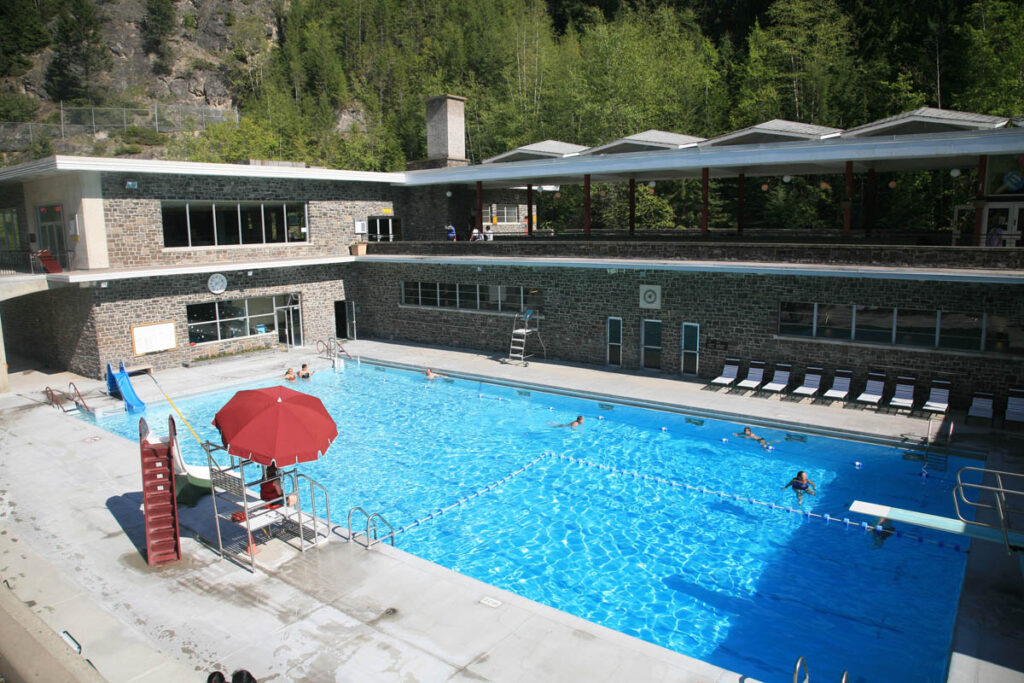Radium Hot Springs Pools
This soothing Radium Hot Springs (250/347-9485, 9 a.m. to 11 p.m. daily in summer, noon to 9 p.m. daily the rest of the year) lies inside Kootenay National Park but just three kilometres (1.9 miles) northeast of the town of the same name, which is outside the park boundary.
The piping hot water is diverted from its natural course into the commercial pools, including one that is Canada’s largest. Steep cliffs tower directly above the hot pool, whose waters are coloured a milky blue by dissolved salts, which include calcium bicarbonate and sulfates of calcium, magnesium, and sodium. The hot pool (39°C/97°F) is particularly stimulating in winter, when it’s edged by snow and covered in steam—your head is almost cold in the chill air, but your submerged body melts into oblivion. If you’re camping at Kootenay National Park’s Redstreak Campground, you can reach the complex on foot.

Radium Hot Springs
Radium Hot Springs History
Radium Hot Springs was discovered many centuries ago by the Kootenay people, who, like today’s visitors, came to enjoy the odorless mineral water that gushes out of the Redwall Fault at 44°C (111°F). Englishman Roland Stuart purchased the springs for $160 in 1890 and built rough concrete pools to contain the water. Development continued when a visiting millionaire—impressed by the improvement in his paralysis after soaking in the springs—contributed more money to the project. Originally known as Sinclair Hot Springs, after an early settler, the springs’ name was changed to Radium in 1915 for the high level of radioactivity in the water. With the declaration of Kootenay National Park in 1922, ownership reverted to the government.
